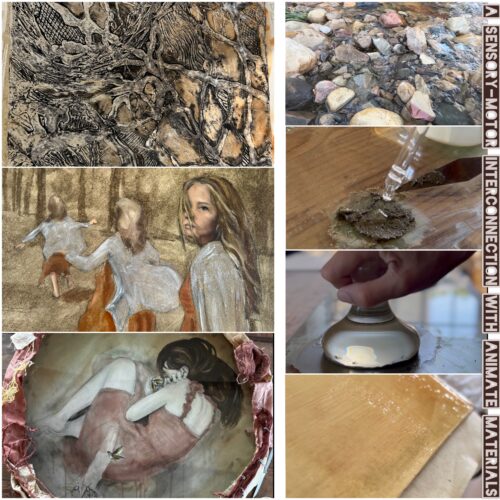
The Making of Books. Part 2.
Planning your Photobook
Whether you are going to make your own book from scratch or order via an online service the following tips apply:
1. Study plenty of books.
Look at layout, typeface/fonts, use of blank pages
It’s really good to photocopy some pages of different books and annotate them.
Make notes on key themes and don’t be afraid of blank space.
Book designers will create a template for books to ensure parity across the pages.


2. Make a mock book
The example images above from Dave Heath’s ‘A Dialogue with Solitude’ allows us to see the planning of the book. You probably don’t have wall space to take your book proof to this extreme but making individual page layouts is an essential part of the book planning process
Play around with the sequencing of images. This stage can take longer than you imagine. It is good to spend time with various versions of your book before completing it.

3. Get someone else to proof read
Never underestimated the importance of checking through the book multiple times.
There was a book submitted for assessment where the students own name was spelt wrong!
Check it, check it again and get someone else to check it for you.
Sequencing your book
Whether you are making your own book or ordering online, producing a proof book is well worth the effort.
Take time to make a version – if ordering online always print out a PDF version. This will allow you to make layout changes and to proof read.
If you are making your own book, consider making a mini version. Use small prints to help organise the content and plan how your book will be folded.
In terms of sequencing your own content for a photobook, John Blakemore is highly recommended as a tutor.


John occasionally tutors bookmaking at The Photo Parlour, a community based darkroom in Nottingham. http://www.photo-parlour.com/
Although his book, John Blakemore’s Black and White Photography Workshop centres around black and white photographic printing. ‘Chapter 2 Thinking Photography: The Tulip Journey’ and ‘Chapter 5 Developing the Subject’ are well worth reading. Chapter 2 is an in depth discussion on the development of a project and Chapter 5 covers how to sequence images to bring a project to fruition.

Where you can you research photo books?
Your local library may only have a limited range of photography books and is unlikely to have a wide range of monographs.
Some books will be available via interlibrary loan but this is not always a viable option.
Galleries normally have a selection of books by artists/photographers in exhibitions.
Sometimes these are behind glass cases but it is possible to take photographs of layouts or sketches. It is also common to have copies of artists books available to browse within a gallery and this gives a valuable opportunity to study books. Again, take photographs or sketches of layouts that strike you as effective.
All the major art/photography galleries have extensive bookshops. Staff are often amenable for you to browse for periods of time, just take care handling the books!
If you want validation for extended browsing in a bookshop – Martin Parr explains how he undertakes research into photobooks here:
Photo fairs also provide opportunities to see a wide variety of photography books and there is a special festival dedicated to photo books at the Kassel FotoBook Festival.

There are also some dedicated photography book libraries available for access around the country. Some do charge a membership fee for viewing so do check the website.
The undisputed collector of photobooks is Martin Parr. With Gerry Badger he has produced three volumes of ‘The Photobook’, documenting the history of the photobook.
Each page features a photobook by an artist with a few sample pages from each book. Volume III features more contemporary books. The video below is a Tate Talk on the launch of Volume III.


To read Part One click here.
Do share useful links/resources in the comments below.
Note about author:
Andrea Norrington has been making books since a child, and currently makes handmade books using waste materials. John Blakemore taught her to make her first photo book in the Spring of 1994. There was a vase of tulips on his kitchen table. She is a self-confessed addict of photography books.
|
|







These articles are incredibly helpful. Thank you Andrea.
Thanks Lynda – it is always good to have feedback 🙂 Andrea